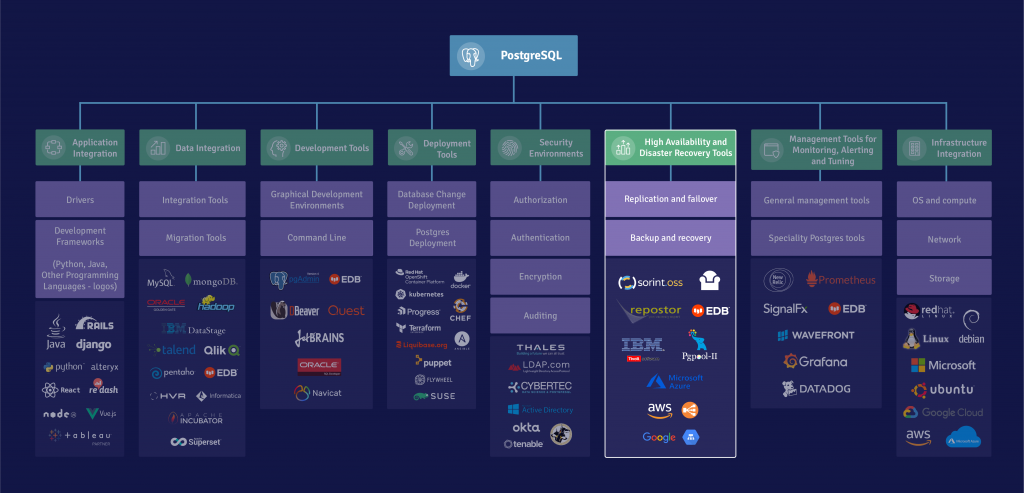Next up in our Integrating PostgreSQL blog series, we'll further explore PostgreSQL integration to help enterprises do more and go faster.
This blog post will highlight the next area of importance: High Availability and Disaster Recovery Tools.

High Availability and Disaster Recovery Tools
EDB Postgres Distributed enables best-in class high availability and 5X throughput than logical replication in a multi-writer architecture. EDB Postgres Distributed can be deployed in the cloud, on premises, or in a hybrid architecture for active-active use cases, enabling rolling upgrades and helping maintain compliance with global data sovereignty regulations.
In containerized environments, solutions such as Stolon or Patroni were often used in first generation architectures when Kubernetes had not yet achieved its current level of maturity. EDB’s Cloud Native Postgres implements a second generation, Kubernetes-native high availability architecture that no longer relies on 3rd party ad-ons.
Prior to the maturing of PostgreSQL’s native replication capabilities, hardware-based high availability solutions, such as RedHat Cluster Server with shared disks and fencing devices, were often used. Similarly, open source add-ons, such as Slony Replication or Lonediste, are rapidly disappearing from use and being replaced with PostgreSQL native capabilities.
For disaster recovery, PostgreSQL has built-in backup and recovery capabilities, which are significantly enhanced by tools such as EDB’s Backup and Recovery Tool (BART), BARMAN, and pgBackrest.
Stay tuned for the next post in this series, which will cover Management Tools for Monitoring, Alerting, and Tuning. In the meantime, check out our infographic to see the bigger picture in regard to PostgreSQL integration.
